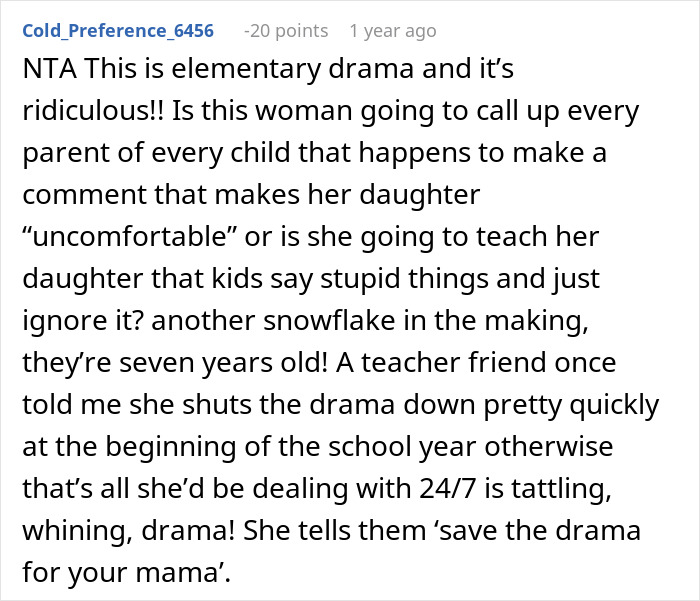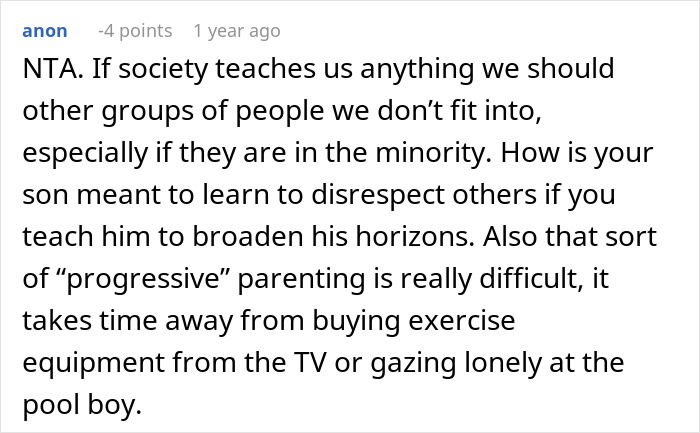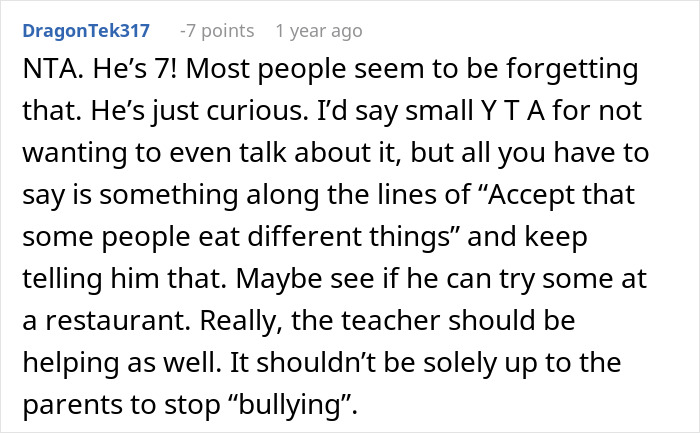Cultural sensitivity is one of those things we learn by interacting with people. And that starts at an early age: in school. Sadly, some children choose to tease others because of their culture. In fact, research has found that 23% of all bullying cases involve harassment based on race.
This 7-year-old did something similar, albeit not on purpose. He called his classmate’s traditional food ‘weird.’ And when the boy’s mother found out, she didn’t see what the big deal was. That caused an uproar online, with many folks accusing her of racism and inadequate parenting.
Bored Panda sought the expertise of the Associate Professor and the Coordinator of the Social Foundations: Multicultural Education Program Area Dr. Traci Baxley, who’s also a cultural and race identity coach for parents. She explained why it’s important to teach children cultural sensitivity and the best ways parents can do that. Read her thoughts below!
A 7-year-old girl was having her traditional lunch when a classmate made fun of it by calling it ‘weird’
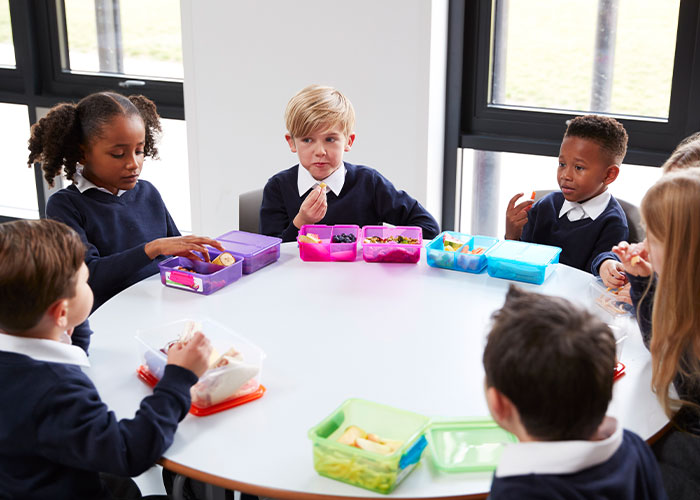
Image credits: monkeybusiness / enavtoelements (not the actual photo)
But the boy’s mom didn’t see anything wrong with his behavior; the girl was just being too sensitive
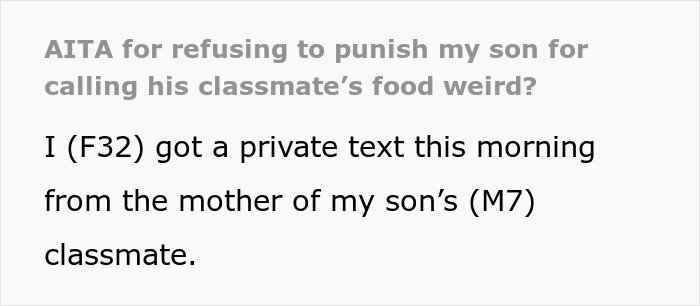
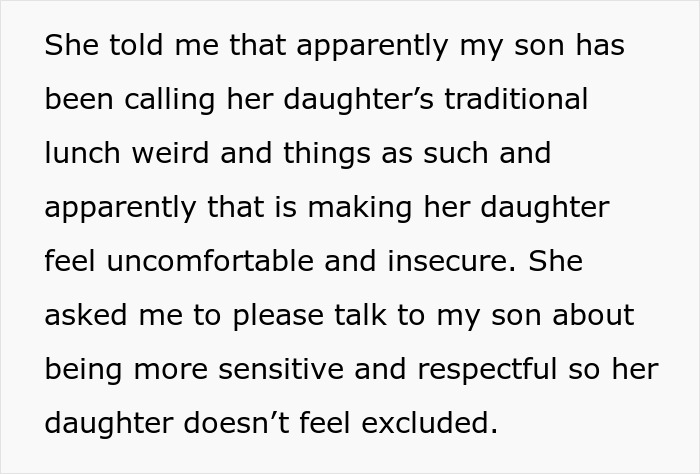
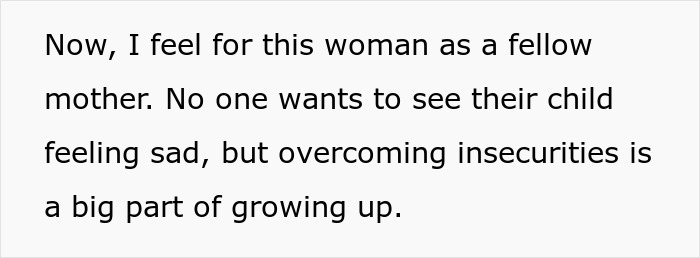
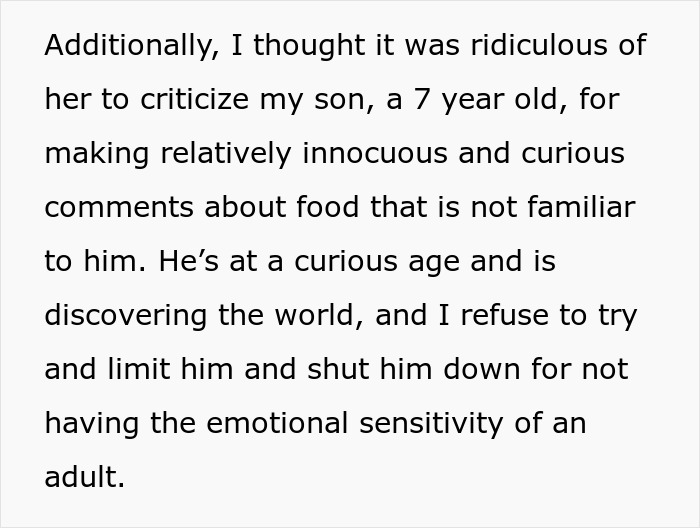
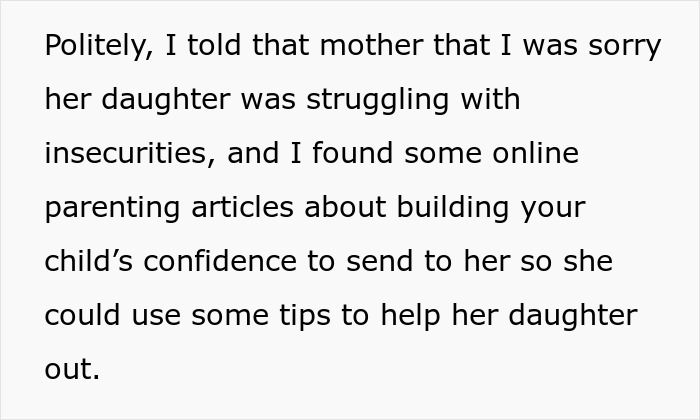
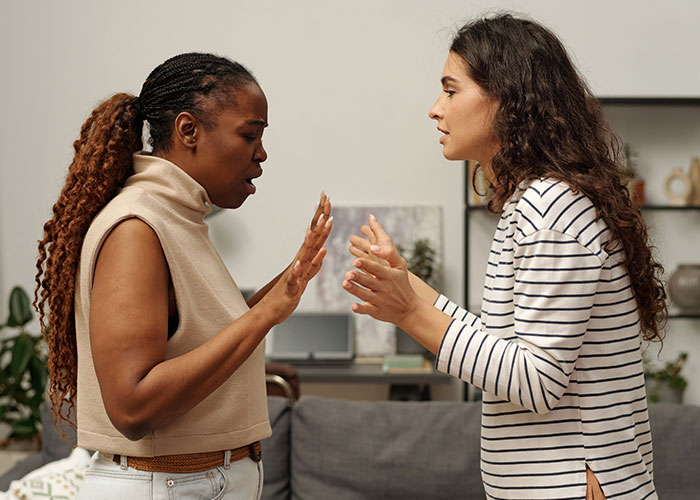
Image credits: Pressmaster / envatoelements (not the actual photo)

Image credits: throwawaymomlunch
Kids as young as three or four might start noticing cultural differences such as food or customs
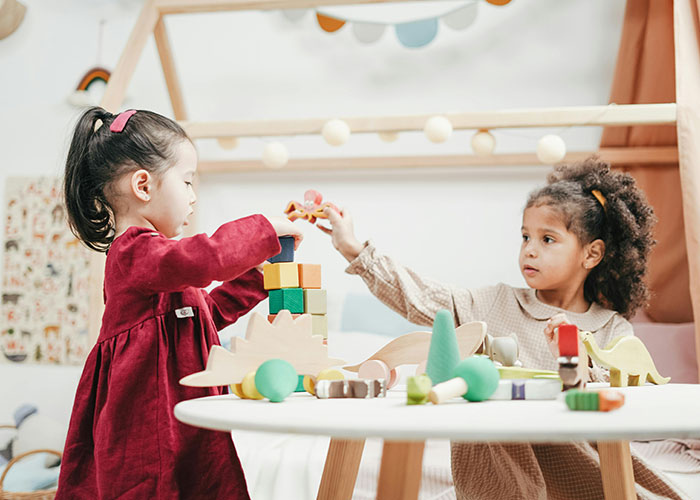
Image credits: cottonbro studio / pexels (not the actual photo)
Children start noticing and commenting on cultural differences at a certain age. A toddler probably wouldn’t do that, but a three or four-year-old might. Dr. Traci Baxley says this is perfectly normal behavior, and kids usually start doing it as early as preschool age.
“This is the time in their lives when they begin interacting more with others outside of their immediate family and become more aware of their surroundings,” she explained to Bored Panda. “During this developmental period, open, honest conversations that celebrate diversity and nurture their curiosity are critical.”
For parents who worry they don’t know how to broach the subject, Dr. Baxley has some possible scripts. Parents can say something like: “It’s great to ask questions about what you see and learn. It shows you’re interested in understanding the world around you!”
It’s also important to teach the child to be open-minded and sensitive. Parents might tell them: “Imagine if someone from another country was learning about our traditions for the first time. We’d want them to be curious and respectful, right? Let’s do the same.”
That said, a child has to feel safe to ask questions. The goal is for them to explore and learn without fear, shame, or judgment. “Approach them with understanding and encouragement to support their continuous growth,” Dr. Baxley says, suggesting a possible script: “It’s okay to be curious or unsure about new things. You can always ask questions here, and we’ll find the answers together.”
Parents should expose children to foods from different cultures
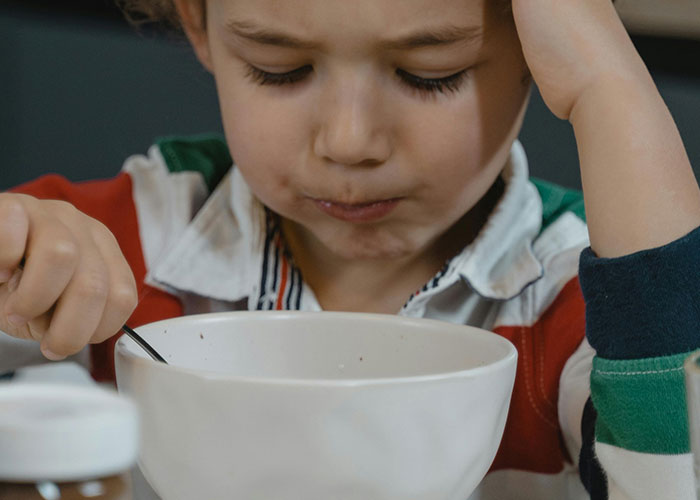
Image credits: Tima Miroshnichenko / pexels (not the actual photo)
Some parents might find it hard to explain the concept of cultural differences in a way their kids can understand. According to Dr. Baxley, food can be a fantastic way to start teaching young children about cultural differences.
“It’s something they can see, touch, and taste, making it both relevant and relatable, and since everyone eats, it’s a universal experience. Parents should embrace their kids’ curiosity about the world. When kids notice different foods, customs, or languages, it’s the perfect chance to teach them more about those cultures,” she explains.
“By talking about these differences in a fun and engaging way, encouraging questions, and sharing stories, parents can help their kids understand and appreciate the diversity around them. This doesn’t just teach them new things—it helps them become more respectful and empathetic towards others,” Dr. Baxley says.
She suggests some simple ways parents can go about it:
-
Choose a recipe to cook together or go to a restaurant from a different culture once a month. Discuss the dish’s origins and the traditional ways it’s prepared and eaten. Compare and contrast the dishes to ones that your family is more familiar with.
-
Read children’s books from around the world. This can expand children’s understanding and appreciation of different lifestyles and perspectives.
-
Watch children’s films like Coco (Mexico), Moana (Polynesia), Ratatouille (France), Brave (Scotland) and Encanto (Colombia) that highlight cultural stories. Discuss the culture, landscape, and values portrayed.
-
If possible, attend cultural festivals in your area. This direct exposure to different cultures through food, music, dance, and crafts can be a rich learning experience. Plus, it’s a great chance to meet people in your extended community.
People in the comments gave the woman a reality check about teaching her son to learn how to respect other cultures
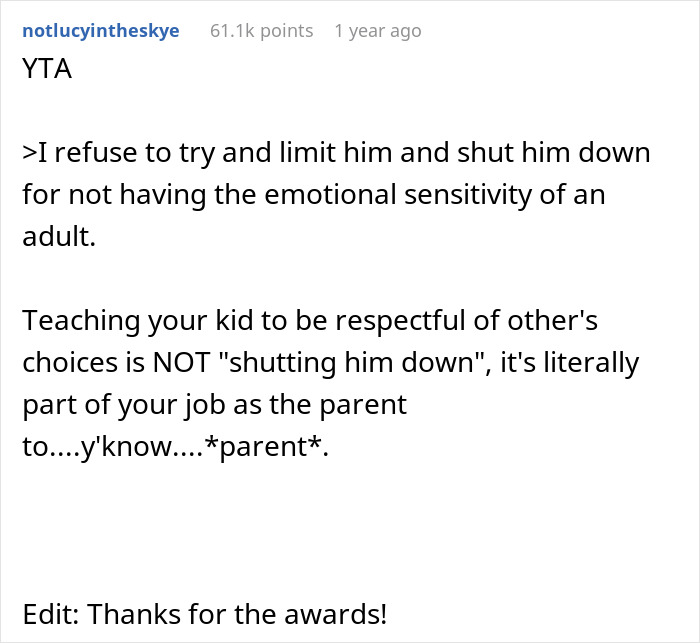

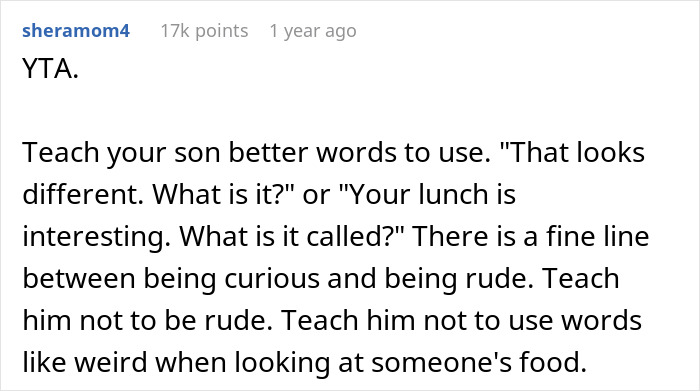

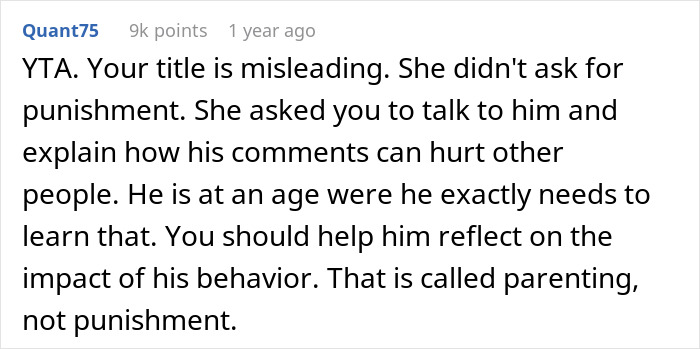


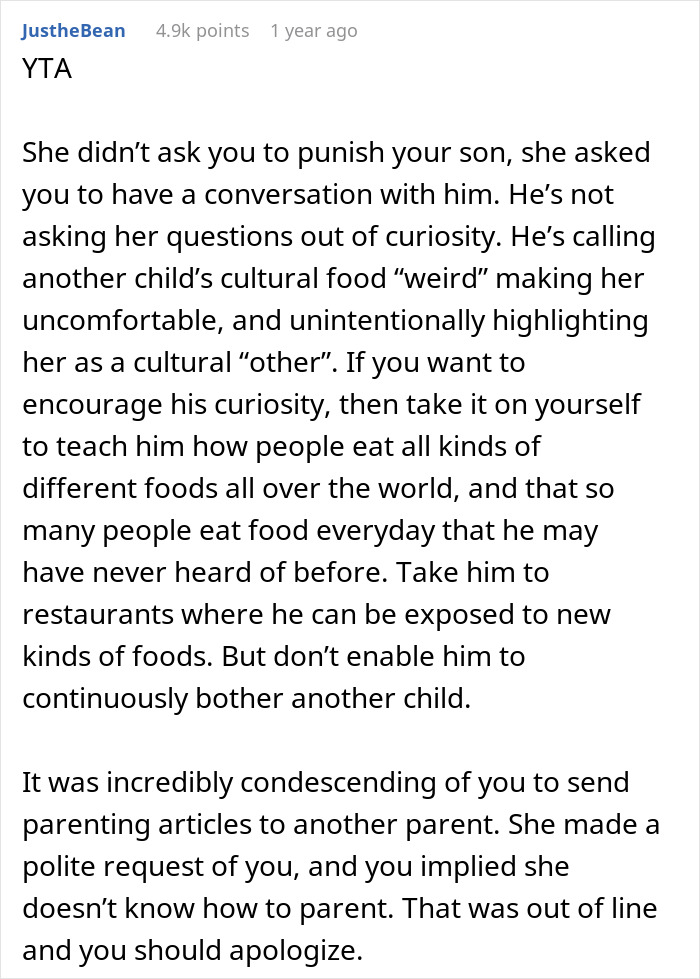
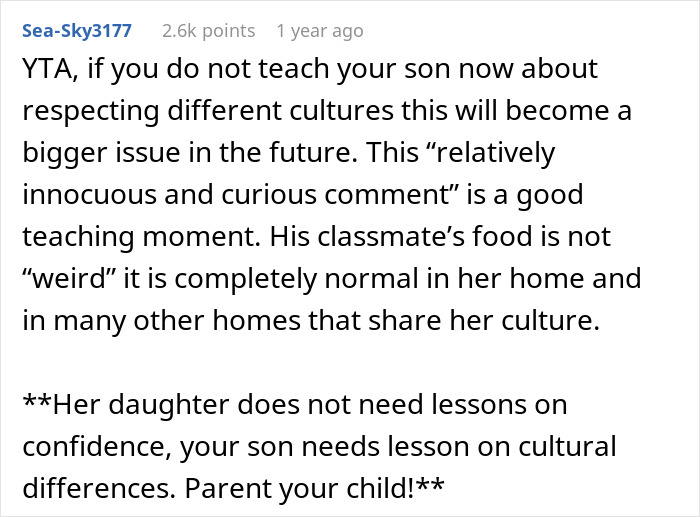
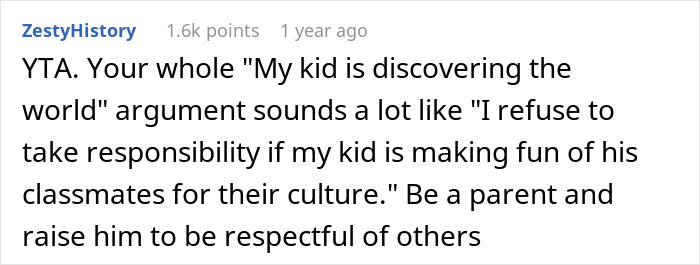

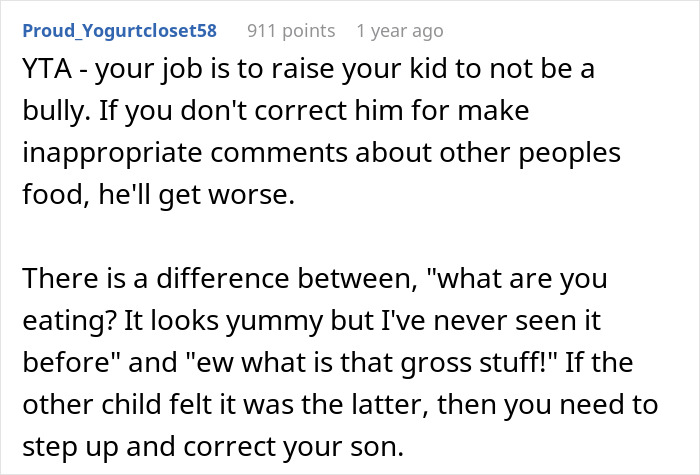


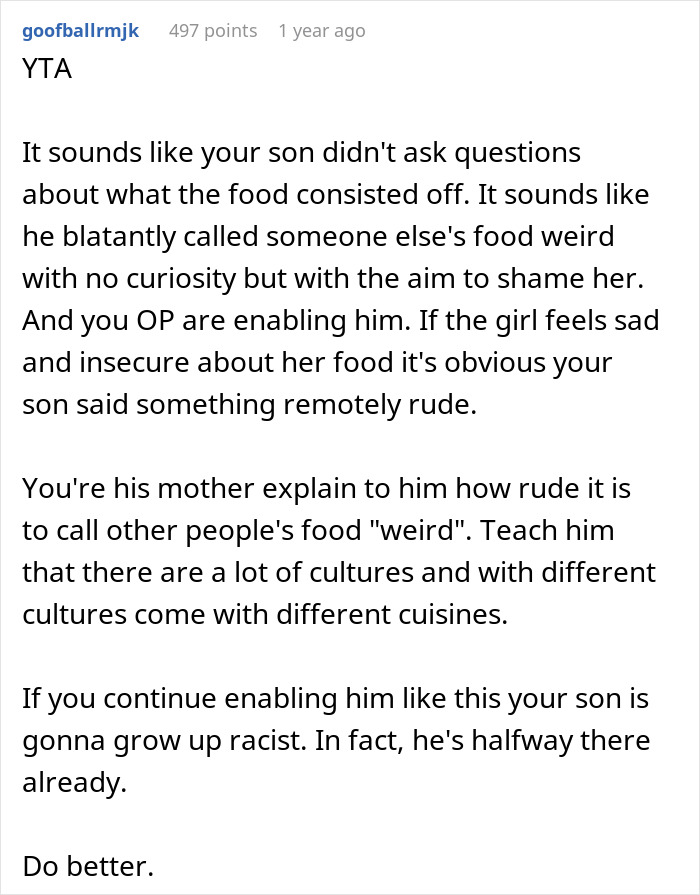
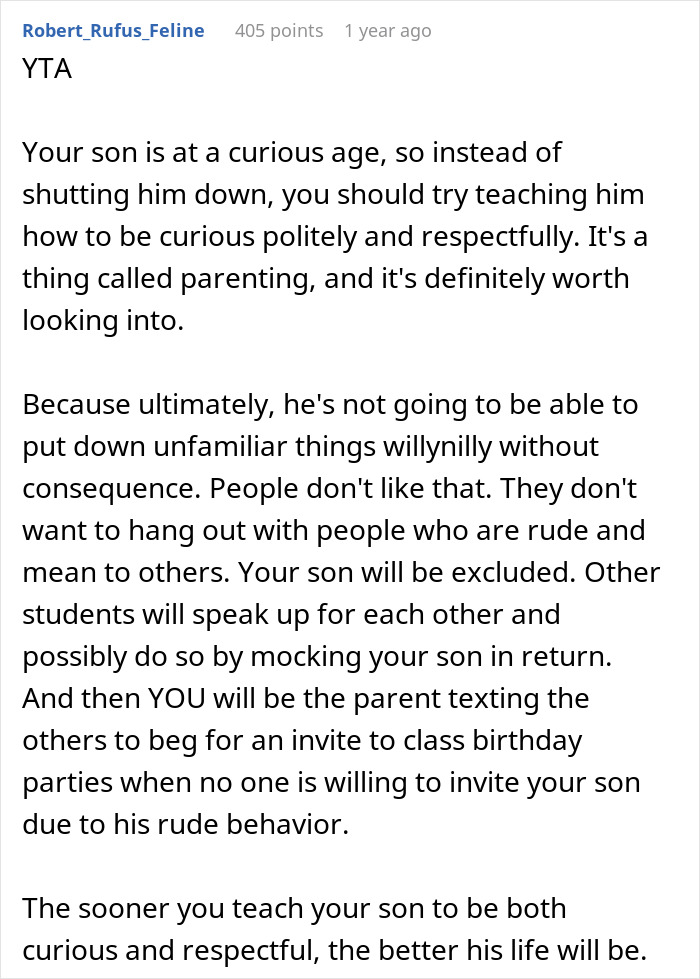

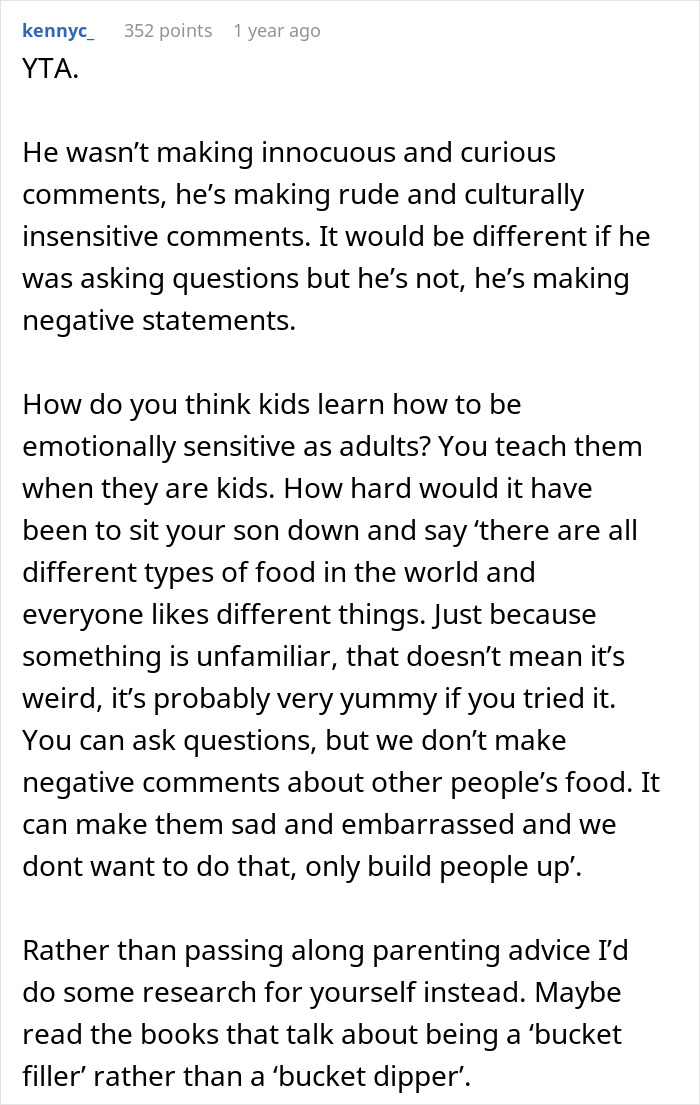
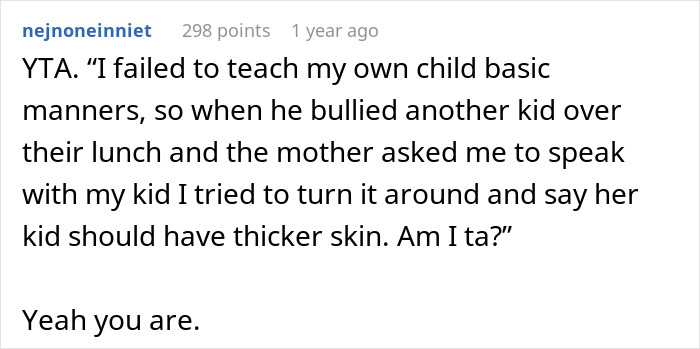
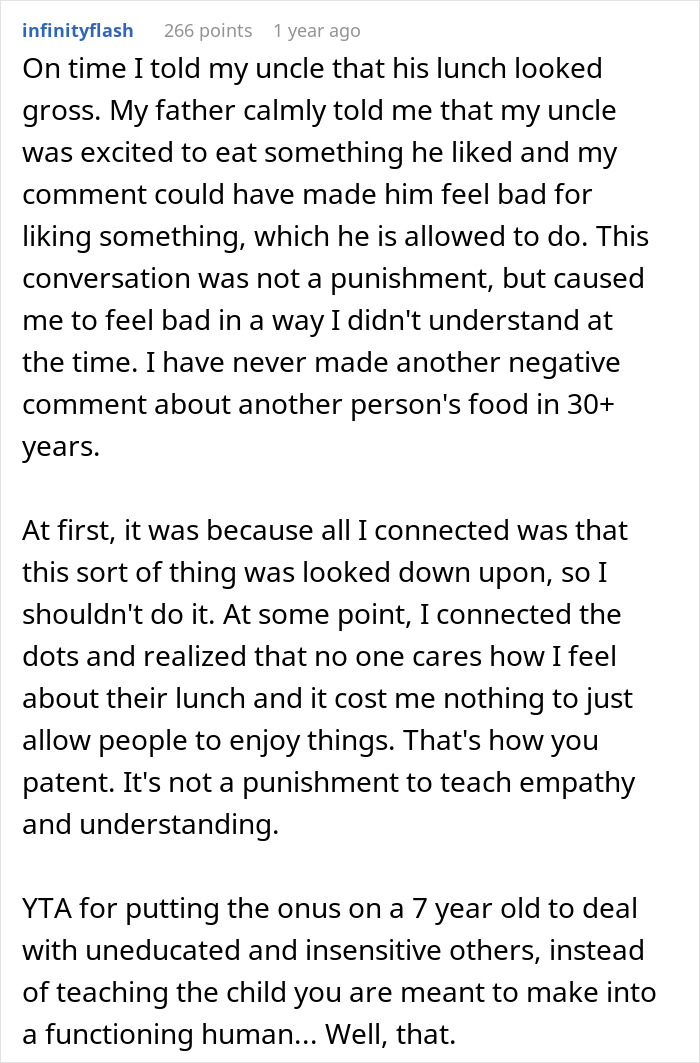
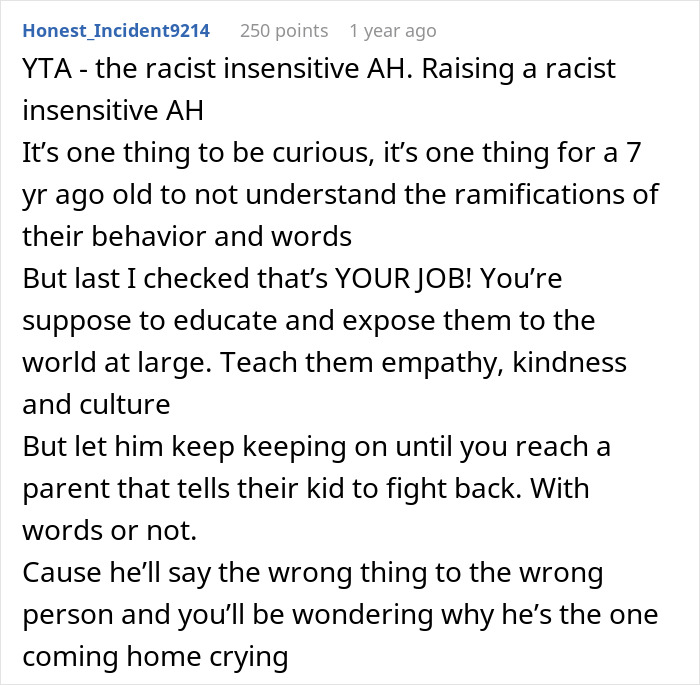
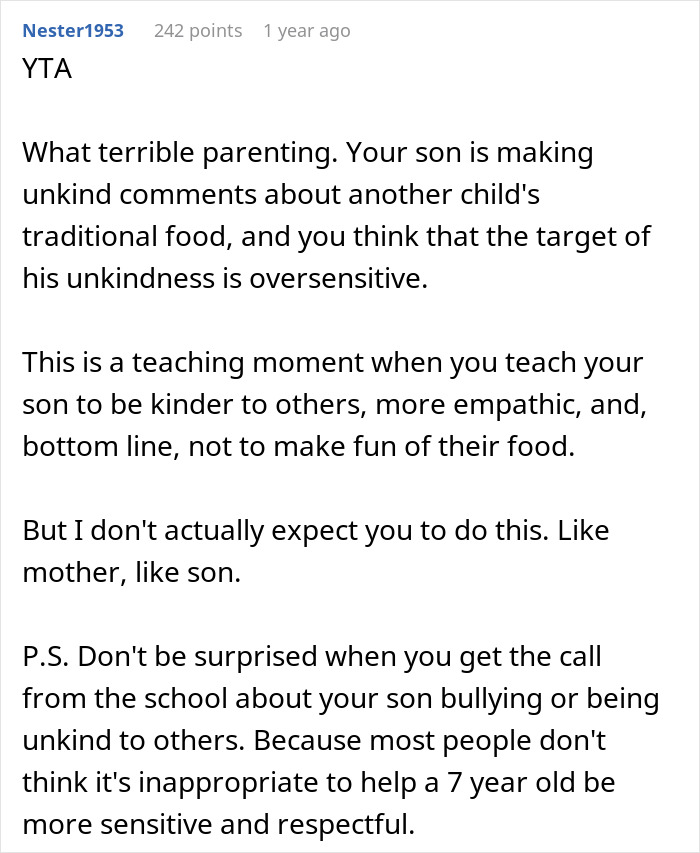
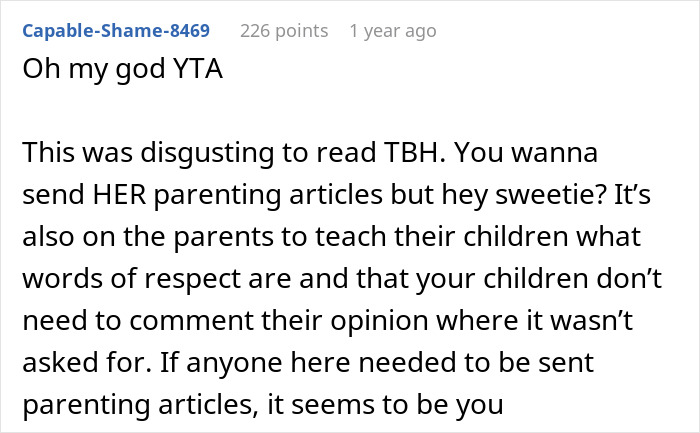
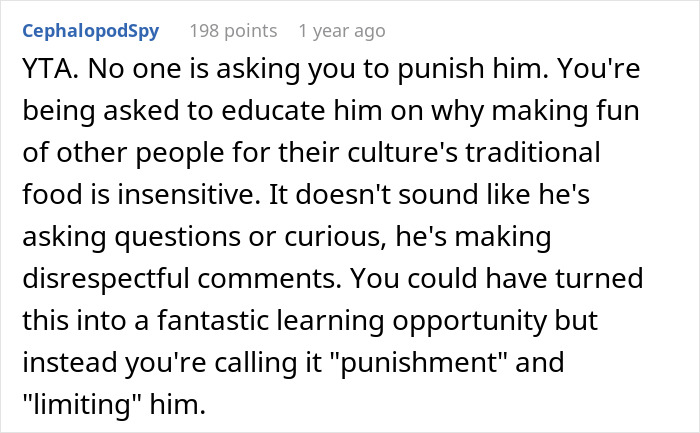
However, some backed the woman, saying the girl needed to grow thicker skin


